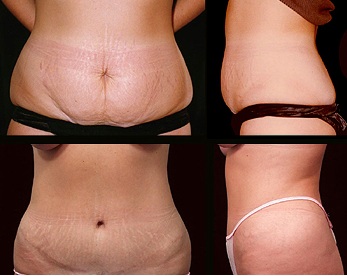Recovering from a tummy tuck, or abdominoplasty, is a key phase that requires careful attention and adherence to medical guidelines to enable optimal outcomes. By understanding what to expect and following the prescribed care regimen, patients can support their healing process and achieve the best possible results. Here is a brief overview of the recovery process, including key milestones, post-operative care instructions, and tips for managing discomfort:
Managing Discomfort and Wound Care
Addressing discomfort and properly caring for surgical wounds play a significant role in the healing process during the initial stages of recovery from a tummy tuck. Patients may experience swelling, bruising, and mild to moderate pain in the abdomen. Surgical drains may also be in place to prevent fluid accumulation. Be sure to:
- Follow postoperative medication instructions provided by your surgeon to manage pain and reduce inflammation.
- Use a compression garment to minimize swelling and support the abdominal area.
- Clean the surgical site as instructed to prevent complications, such as infection. Report any signs of redness, warmth, or unusual discharge to your surgical team immediately.
It’s common to feel some tightness in the abdominal area following surgery. This sensation typically decreases as healing progresses.
Adding Activity Post-Surgery
A key component of abdominal recovery is the gradual reintroduction of activity. While rest is necessary in the first few days, mobility improves circulation and reduces the risk of blood clots. Here are a few recommendations:
- Short, slow walks are recommended within 24 to 48 hours after surgery. Walking promotes circulation and prevents complications.
- Heavy lifting, bending, or other strenuous activities should be avoided for several weeks to allow for proper healing of the incision and abdominal muscles.
- Returning to non-physical work is possible after approximately two weeks, but this depends on the individual’s progress and the specific nature of their job. Always follow your surgeon’s advice on activity levels.
Listening to your body is key. Overexertion can delay healing or cause additional discomfort.
Understanding Long-Term Recovery
Tummy tuck recovery can take several months, with swelling and sensitivity gradually decreasing over time. The healing process extends beyond the initial few weeks, and making adjustments to daily habits can support long-term outcomes. Staying hydrated and maintaining a high-protein diet can help with tissue repair and provide the nutrients your body needs post-surgery.
It’s also helpful to protect the incision area from direct sunlight to reduce visible scarring; using protective clothing or approved sunscreen can help maintain skin health. Once cleared by your surgeon, incorporating light exercises such as walking and gentle stretching can strengthen abdominal muscles without putting strain on them during the early stages of recovery. Committing to follow-up appointments with your surgical team is necessary to monitor progress and address any concerns.
Learn More About Getting a Tummy Tuck
Recovering from a tummy tuck requires a structured and proactive approach. Effective discomfort management, gradual reintroduction of movement, and long-term lifestyle adjustments can significantly enhance outcomes. Surgical guidance, coupled with attention to your body’s needs, provides a foundation for a smooth recovery and optimal results. If you have additional questions or require clarification during your recovery, reach out to your surgical team to make sure you remain on the right track.





Leave a Reply